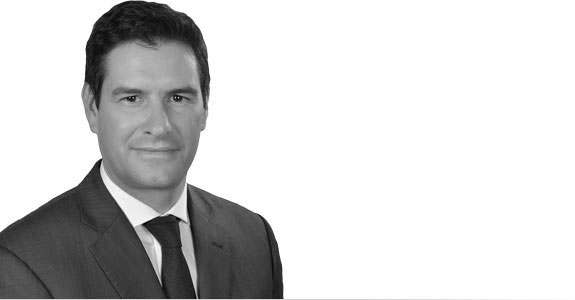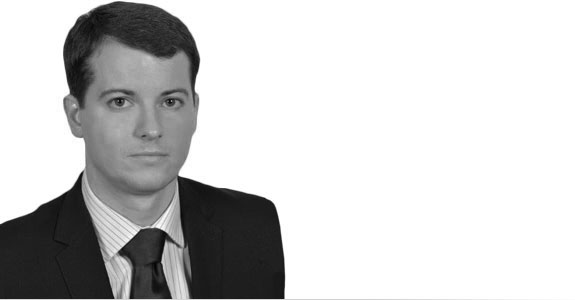Briefings
Decennial Liability Insurance
As has been reported recently, the Insurance Authority (IA) in the UAE is considering introducing mandatory requirements for decennial liability insurance cover.
Our Construction team has produced a briefing on the impact on construction projects, including tips to help prepare for the new requirements1. This briefing focuses on the key issues for the insurance market arising out of decennial liability insurance cover, in light of these proposals.
Decennial Liability – what is it?
Decennial liability derives from the French (Napoleonic) Civil Code developed in the early 1800s. As the name suggests, it is a ten-year liability imposed upon those responsible for the design and construction of buildings and other “fixed installations".
As the influence of the French Civil Code spread across Africa and the Middle East, so too did the concept of decennial liability. In the UAE, the relevant provisions are set out in Articles 880 – 883 of the UAE Civil Code (Federal Law No. 5 of 1985). However, there are key differences between the provisions concerning decennial liability under French law and UAE law, as we shall come on to later in this article.
Under the provisions of the UAE Civil Code, architects/engineers (referred to as “designers" hereafter) and contractors are jointly liable to compensate the employer for any: (a) total or partial collapse; or (b) defect affecting the stability or safety of the building or fixed installation, occurring or discovered in the ten-year period following delivery. Decennial liability is strict and designers and contractors may be liable regardless of (a) any negligence or fault of the designer or contractor; (b) whether the defect or collapse arises out of a “defect" in the land itself; and (c) even if the employer accepts buildings or installations “as built".
The defences to any claim under decennial liability are limited and include: (i) the building was not intended to last for ten years or more; (ii) the issue arose out of an extraneous cause beyond their control (e.g. a natural catastrophe such as an earthquake); or (iii) a partial defence for designers, that if they did not perform any supervisory role, then their liability is limited to defects in the design only. Where there are no design defects, but there was defective workmanship, the designer will still be liable if the work was carried out under their supervision. Additionally, the terms “collapse" and “defect" are not defined, so whether a collapse has occurred or whether there is a defect in the safety or stability will be a matter of fact for a trial court to determine, assisted by expert evidence.
A critical factor is the three-year limitation period for bringing claims, which commences from the date of the collapse or the discovery of the defect. The total period in which a claim could be brought is therefore 13 years from the date of delivery of the building/works.
Claims can be brought against both the designers and the contractor and the court may determine that either one of them is liable or apportion liability between them.
Importantly, compensation for decennial liability is in respect of the actual loss suffered and may include loss of profit/loss of use. Moreover, the law expressly prohibits any attempt to contract out of or to limit such liability.
The duty in respect of decennial liability under UAE law has been deemed to be a contractual duty owed to the employer (i.e. the contractual counterparty of the contractor/designer). Under French law the duty is specifically owed to the owner of the building and anyone deriving title from them. However, given the classification of the duty, the position under UAE law in respect to parties other than the employer/counterparty remains unclear. Whilst the duty may be owed to beneficiaries under the construction contract, or such rights may be assigned, the extent to which buyers and subsequent buyers benefit from the duty is uncertain. The position is somewhat complicated by the relatively recent legal recognition of jointly owned property under UAE law.
The concept of decennial liability also goes hand in hand with developers’ obligations to buyers/owners in respect of defects. Under UAE law concerning jointly owned properties, developers are liable to remedy defects in structural elements for a period of ten years from the date of completion and have liability for a period of one year from the date of completion in respect of defective installations.
Decennial Liability insurance – why is it needed?
Simply put – the cost consequences following partial or total building collapse can be enormous, as can the costs involved in remedying a defect that threatens the safety or the stability of a building. Other forms of insurance cover either may not respond to this liability or may not have limits that are suitable to deal with the scale of the potential exposure.
At present, decennial liability cover is available in the UAE insurance market, although providers are limited and it is not routinely taken out. This may be in part due to the cost of such policies, along with unfamiliarity as to decennial liability obligations under UAE law and the interplay of decennial liability with other forms of insurance cover.
Cover for contractors and designers in respect of their decennial liability is usually provided by endorsement as an extension to a CAR (Contractors/Construction All Risks), EAR (Erection All Risks) or PI (Professional Indemnity) policy and standalone covers are less common.
Cover is also available for owners of buildings by way of inherent defects cover. This does not cover contractors’/designers’ decennial liability, but protects the owner(s) in respect of defects in the building. It may be possible to provide cover, in effect, to contractors/designers by including a valid waiver of subrogation in the inherent defects cover. However, given the prohibition on contracting out of, or limiting, liability, it is not clear that such a waiver of subrogation could be relied on by designers/contractors.
What’s wrong with the existing property cover alone?
Typically, construction projects are covered by a CAR or EAR policy. Although the contractor, and sometimes the designer, will be a named insured, these policies usually contain some form of defects exclusion (LEG or DE clauses), which may operate to exclude some or all liability for loss or damage arising out of defects in design and/or workmanship. In addition, where cover is available for defects during the period of decennial liability (i.e. from the date of handover of the building/works) this would only apply for the limited duration of the maintenance period, which typically conforms to the defects liability period under the underlying construction contracts – usually 12 or 24 months – following which cover under a CAR/EAR policy comes to an end. Although CAR/EAR policies will often include third party liability cover, this will usually exclude liability arising from damage to the property which is being constructed, and therefore would not apply to decennial liability claims.
Losses occurring after handover may fall within the scope of a building owner’s operational PAR (Property All Risks) cover, but this will provide first-party cover for damage to the building and not contractors’/designers’ potential exposure to decennial liability. Again, PAR policies will typically include some form of defect liability exclusion and so may not respond. Such covers also typically exclude cover for losses arising out of certain causes, such as ground conditions, which may be contributing factors to decennial liability. Furthermore, exposure arising from decennial liability may be beyond remedial works and can include loss of use/loss of profits. These elements are only potentially covered if business interruption cover has also been taken out.
Even if a building owner is able to claim under its PAR policy, if the loss arose from defective design or construction, the building owner’s PAR insurers may wish to pursue a subrogated recovery against the responsible contractor/designer, who would be left exposed without insurance cover for their decennial liability unless a waiver of subrogation is contained in the policy (although the same point in relation to reliance applies).
Why isn’t PI cover sufficient?
Liability
PI policies typically provide cover for negligence or fault of the insured professional. However, decennial liability does not require proof of fault; it is a strict liability which applies irrespective of any negligence or other fault (bar the extraneous cause defence). Further, a PI policy will only respond to the insured professional’s own negligence/fault, whereas a designer’s decennial liability is joint with that of the contractor (where the designer exercises a supervisory role) i.e. even if the issue is one of construction only, the designer may still be liable if it has some supervisory role beyond simple design duties.
PI policies therefore may not respond at all if the relevant professional(s) is/are found liable under the decennial liability provisions of the UAE Civil Code, without proof of fault.
Although in some jurisdictions PI policies may respond to the establishment of any civil liability and not specifically to fault-based liability, these policies will typically exclude decennial liability from cover.
Decennial liability policies, by contrast, are specifically tailored to provide cover for this risk.
Period of cover
As above, assuming the building collapses or a qualifying defect is discovered on the last day of the ten-year decennial liability period, the total period during which a claim could be brought is 13 years from the date of handover.
PI insurance operates on a claims-made basis. A building owner must rely on the relevant professional having renewed or maintained its PI insurance every year for 13 years after delivery of the building. This may not provide peace of mind for the employer or the relevant professional as, over the course of multiple renewals, amongst other risks, costs or scope of cover may change.
Decennial liability cover, on the other hand, incepts from the date of delivery of the works and runs to cover the entire period of potential liability. Premium is generally paid in one instalment at the beginning of the period.
Policy limits
Often, the limits of liability under a PI policy are modest and are subject to an aggregate as well as a per claim limit. Given the nature of decennial liability and the types of loss out of which it arises, the value of these claims can be higher than the available limits.
Again, given that decennial liability cover is specific to this type of risk, the policy limits under the new rules should be set at an adequate level.
PI Insurance – a word of warning
We should caution that decennial liability cover will usually not respond to any resultant losses caused to third party property from a collapse or a relevant defect, so professionals should consider retaining their PI insurance to cover any fault based liability to third parties in addition to the new mandatory decennial liability insurance. It is not clear at present whether the IA plans to introduce any new regulations to cover general PI insurance as well.
Existing Decennial Liability insurance – how does it work?
Contractor/Designer
As noted above, where decennial liability cover is obtained in the UAE it is usually by way of the contractor/designer being covered by endorsement to the relevant CAR/EAR/PI Policy. This will protect the contractor/designer in the event of either a direct claim by the employer or other beneficiary or from a subrogated claim from the building owners’ inherent defects insurers.
This cover operates on a legal liability basis and (subject to the wording) substantive cover should be triggered by an established legal liability of the contractor/designer in respect of the collapse or relevant defect. Cover for defence costs is also provided and is triggered at an earlier stage (this usually requires approval from insurers, which the insured should seek when it receives notification of a claim).
Critically, insurers often seek to limit their exposure by making this cover subject to a sub-limit or cap, which means that cover is not provided for the entire exposure. Despite this, given that the level of exposure (and insurers’ share of the same) can be so extreme, insurers will carry out increased risk analysis, which can impact on time and cost of carrying out the project. For this reason, decennial liability cover is currently very expensive.
Owners
Inherent defects insurance covers building owners for the cost of repairing and/or replacing and/or strengthening a building following discovery of an inherent defect. This includes the cost of demolishing the building and removing debris. The policy is triggered by discovery of the defect or the collapse during the ten-year period from the date on the Certificate of Practical Completion (per building, if more than one building is involved).
These policies can be assigned to cover subsequent owners of the building (with consent from insurers).
Mandatory Decennial Liability insurance – how will it work?
At present, there are no details of exactly how mandatory decennial liability insurance would work in the UAE. Some guidance may be taken from France, where decennial liability insurance has been mandatory since 1978. However, it is important to appreciate the differences between the two systems, and in particular that under the French system it is the owner of the building and anyone who derives title from them who is owed the duty.
Under the French system, the contractor and designer are both required to take out decennial liability insurance, and the building owner is obliged to take out latent defects cover. Insurers are also obliged to offer cover. There are certain exceptions, for example, civil engineering works do not attract these requirements. The law also provides standard clauses that must be included in (or will be read into) a policy.
Although there a number of different policy regimes in France, the most common format is for the building owner to take out an Assurance Dommage-Ouvrage (inherent defects) policy and for the contractor/designer to take out an Assurance Décennale (decennial liability) policy. The Assurance Dommage-Ouvrage insurer is required to take a position on coverage within a very tight timeframe; it must make a decision within 60 days of the loss notification, with an “indemnification offer" to be made within 90 days of the loss notification. Once the insured has accepted the offer, the insurer must pay within 15 days. If the insurer fails to meet these deadlines, the insurer can be subject to heavy interest penalties. This insurer will then typically bring a subrogated claim against the contractor/designer.
The French system also provides for unified insurance policies, known as Police unique de chantier (joint between the owners and the contractors/designers, with premium paid by the building owner) and Assurance collective de responsabilité décennale (collective decennial liability insurance between contractors/designers, with premium paid collectively). The latter of these two is not commonly used.
The unified policies and the Assurance Dommage-Ouvrage policy are specific to the building/project. However, the Assurance Décennale policy (operating as a liability policy) can be specific to the insured professional and can therefore cover multiple projects. In these circumstances, the insured professional is usually under a much stricter disclosure obligation and must usually declare all works in excess of a certain value, in order to be covered. Further, Assurance Décennale policies also only apply to construction activities that are declared by the policyholder.
Failure to offer or take out these policies can result in legal sanctions (including fines and even prison sentences). In addition, building owners may face issues in selling property if they cannot prove that cover is in place.
The Insurers’ perspective
From the perspective of insurers, mandatory decennial liability cover could bring with it great opportunities to expand into a relatively untapped area of the UAE insurance market. There are also potential pitfalls.
Given the limited take up of cover to date, there is a lack of historical claims data against which to price the risk. In France, insurers can be sanctioned if premiums are set too high when compared to the risks insured. It is possible that the IA will adopt a similar position to bring the costs of cover down. Insurers will need to carefully manage risk in order to ensure that they are not over-exposed to the potentially extreme costs flowing from decennial liability, without the protection of sufficient premiums.
Furthermore, the business is long-tail. Irrespective of whether the UAE maintains a two-policy regime or introduces a unified policy, insurers’ minimum potential exposure is for ten years under any one policy. With a liability period of ten years plus a potential further three-year limitation period, insurers’ exposure could run for up to 13 years just for a notification to be received. If a claim is contested or if repair works drag out, insurers’ exposure could be for significantly longer.
Although decennial liability does not require fault, if there is fault involved but the true “guilty" party is a sub-contractor, insurers may seek to recover via subrogation. Sub-contractors are not caught by the decennial liability provisions of UAE law and may not be required to take out decennial liability insurance. Insurers may need to consider whether the sub-contractors have adequate insurance as well as whether any waivers of subrogation, or contractual indemnities to the main contractor, have been granted that may affect recovery.
Insurers may also need to consider carrying out a greater monitoring role in the works, although insurers’ ability to do so will depend on which type of policy is taken out and when the insured approaches insurers for cover. If insurers play no role in monitoring the works then insurers will need to carefully consider their proposal forms to ensure that all the relevant details are requested, as failure to ask material questions can affect an insurer’s right to avoid a policy under UAE law.
For further information, please contact the authors of this briefing:
Sam Wakerley
Partner, Dubai
M +971 4 423 0530
E sam.wakerley@hfw.com
Thomas Neighbour
Associate, Dubai
T +971 4 423 0515
E thomas.neighbour@hfw.com
Footnote




